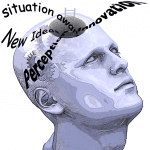
The process of developing situational awareness starts with capturing information using the five senses. Then, the information must be understood. And finally, once the information is understood, a prediction is made about future outcomes. This process can be challenged when staffing is unpredictable.
The role of staffing in situational awareness development
 Staffing related issues was identified as the most challenging of all the barriers identified in my doctoral research. There are multiple staffing issues that can significantly impact situational awareness including: Under staffing, over staffing, quality of staffing, response time delays, experience levels, staff training, and unpredictable staffing.
Staffing related issues was identified as the most challenging of all the barriers identified in my doctoral research. There are multiple staffing issues that can significantly impact situational awareness including: Under staffing, over staffing, quality of staffing, response time delays, experience levels, staff training, and unpredictable staffing.
As an officer or incident commander evaluates an incident scene and begins the process of making predictions of future events, the officer/commander forms visual images in the brain (called mental models). Think of these mental models as movies that are played in the mind. These movies have actors. The actors are the personnel that respond to the call.
Unpredictable staffing
In career departments the staffing is, for the most part, predictable. It is easy to look at a roster at the beginning of the shift and see who is on duty and on which apparatus they will be riding. Knowing this in advance allows an officer/commander to make a reasonable assessment (good or bad) about the capabilities of each crew.
 This assessment then, in turn, allows the officer/commander to make reasonable predictions about outcomes at incident scenes based on the quantity and quality of the on-duty staffing. But what happens when the staffing isn’t on-duty (i.e., the incident response is staffed by callback personnel)?
This assessment then, in turn, allows the officer/commander to make reasonable predictions about outcomes at incident scenes based on the quantity and quality of the on-duty staffing. But what happens when the staffing isn’t on-duty (i.e., the incident response is staffed by callback personnel)?
When callback personnel comprise the staffing, the officer/commander is not able to make reasonable predictions until an assessment of crew quantity and quality has been conducted.
Situational Assessment of Personnel
Where staffing quantity and/or quality is unpredictable, it is important for the officer/commander to complete an assessment of the crew(s) to determine their capabilities. This assessment should consider the training and experience of each crew member and, equally important, the training and experience of the collective crew as it relates to the specific task to be performed.
For example, if the commander needs a crew to conduct a primary search, it would be a situational awareness best practice for the commander to assess the quantity and quality of the crew being assigned to complete the task. This assessment should include a determination of how well the crew is going to work together, as a unit, to complete the task.
If circumstances are such that the particular crew assembled at the incident scene have not practiced, as a unit, the task of search and rescue then the commander should expect their performance to be slower due to lack of coordination.
Chief Gasaway’s Advice
 It stands to reason that well-trained, well-experienced, well-practiced crews will be more efficient (and arguably more effective) at completing tasks. Equally, crews that are not well-trained, well-experienced and well-practiced will be less efficient (and arguably less effective). Officers and commanders set expectations for crew performance and incident scene progress, respectively, based on an accurate assessment of the personnel assembled.
It stands to reason that well-trained, well-experienced, well-practiced crews will be more efficient (and arguably more effective) at completing tasks. Equally, crews that are not well-trained, well-experienced and well-practiced will be less efficient (and arguably less effective). Officers and commanders set expectations for crew performance and incident scene progress, respectively, based on an accurate assessment of the personnel assembled.
One of the most important components in the development of situational awareness is being able to make accurate predications about future events. These predications include setting expectations for outcomes. These expectations are influenced, in part, on the quantity and quality of the staffing. Take time to conduct an assessment of personnel before giving assignments.
Action Items
 1. Discuss how unpredictable staffing levels can impact incident scene outcomes.
1. Discuss how unpredictable staffing levels can impact incident scene outcomes.
2. Discuss how assessing crew quantity and quality can help improve expectations of outcomes.
3. Discuss strategies for assessing crew quantity and quality.
The mission of Situational Awareness Matters is simple: Help first responders see the bad things coming… in time to change the outcome.
Safety begins with SA!
Share your comments on this article in the “Leave a Reply” box below. If you want to send me incident pictures, videos or have an idea you’d like me to research and write about, contact me. I really enjoy getting feedback and supportive messages from fellow first responders. It gives me the energy to work harder for you.
Thanks,

Email: Support@RichGasaway.com
Phone: 612-548-4424
Facebook Fan Page: www.facebook.com/SAMatters
Twitter: @SAMatters
LinkedIn: Rich Gasaway
YouTube: SAMattersTV
iTunes: SAMatters Radio

I like how you mentioned that there are multiple staffing related issues other than understaffing. My boss is worried that we will be understaffed for the winter so he wants to hire anyone but there are more problems that will come if you hire everyone that applies. I’ll talk to him to let him know of the possible problems that come with hiring anyone that applies.